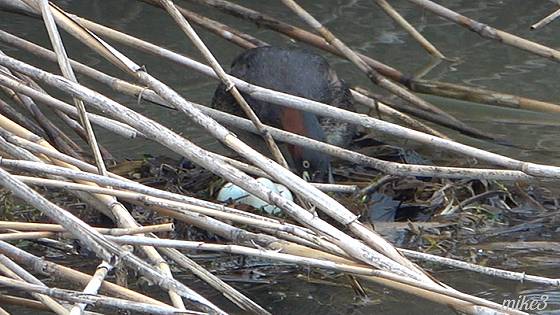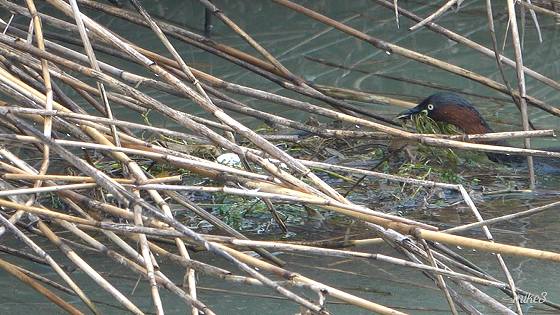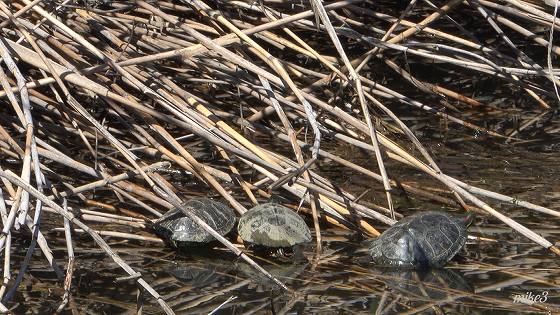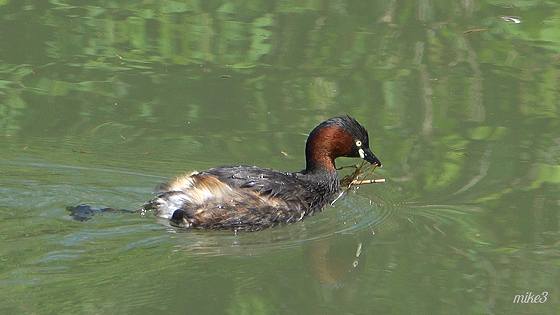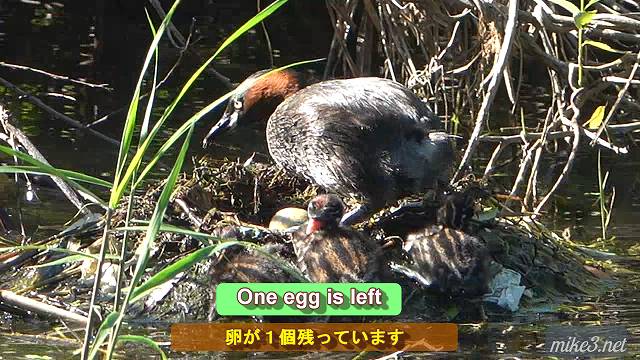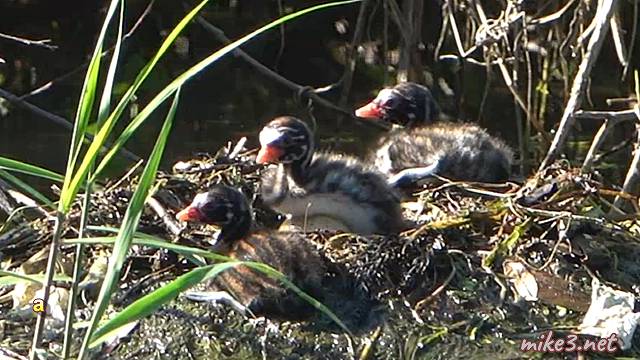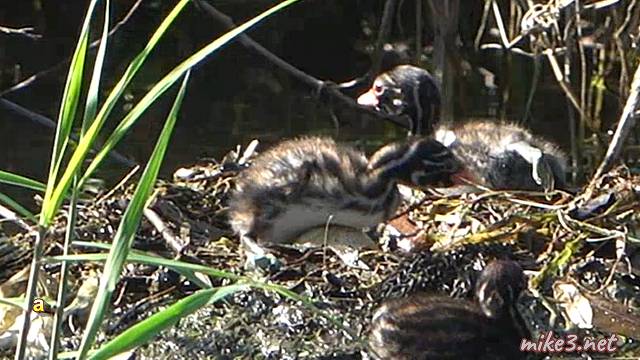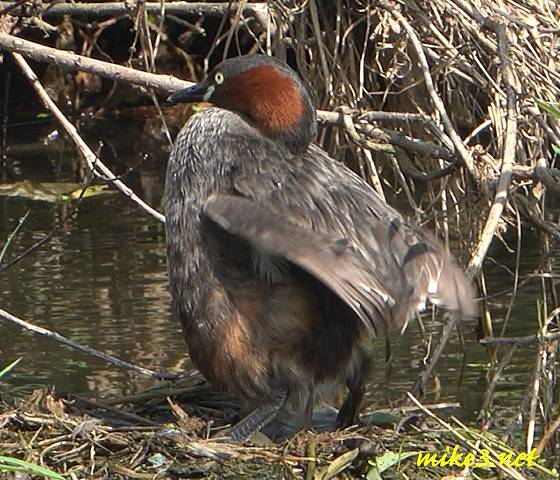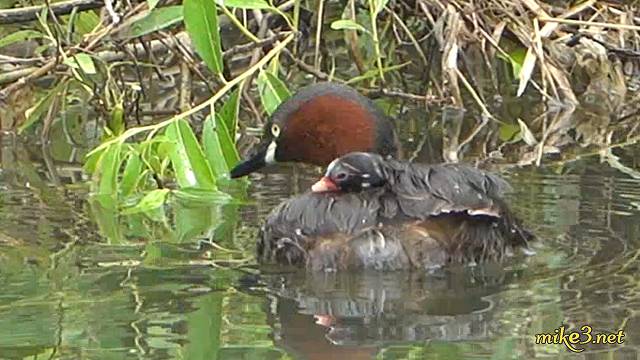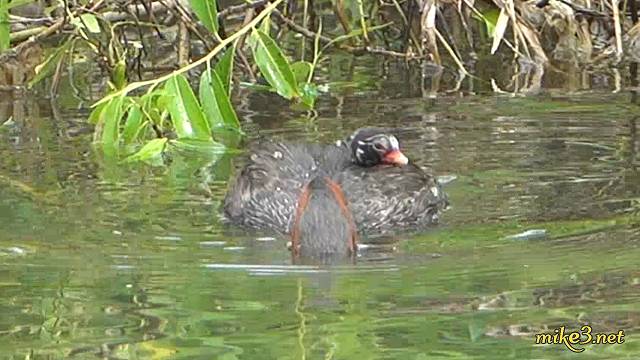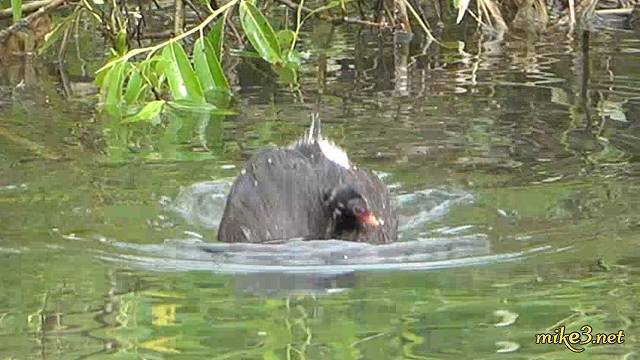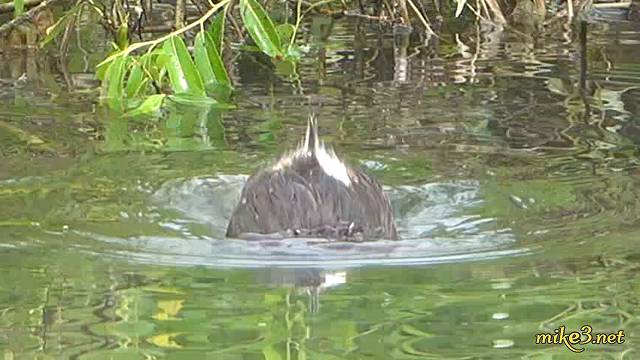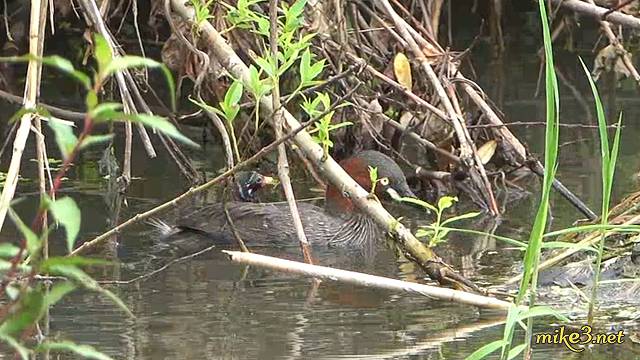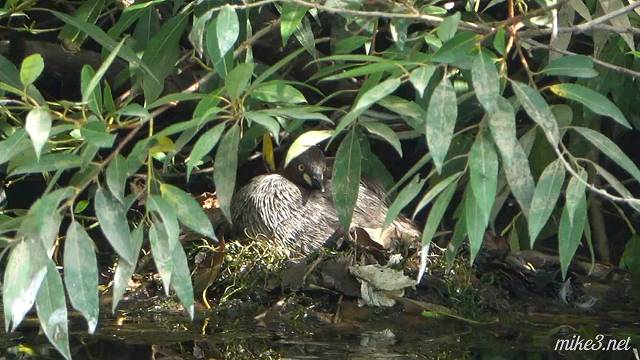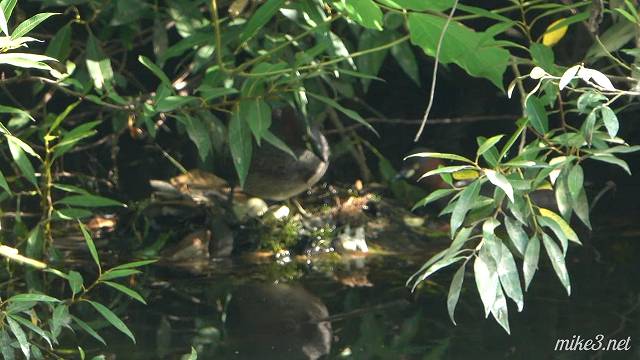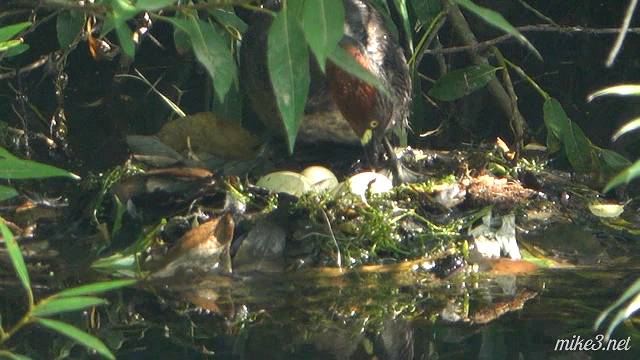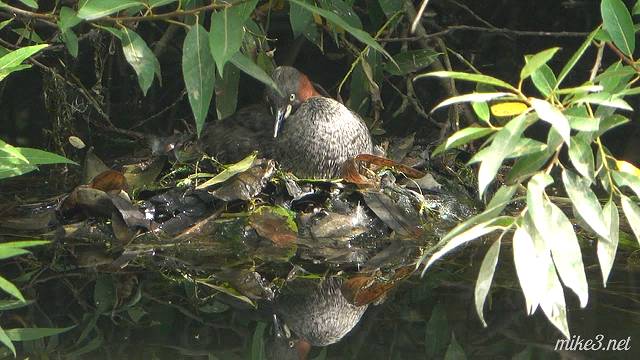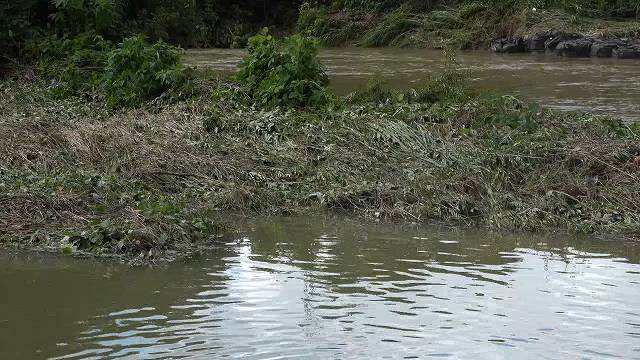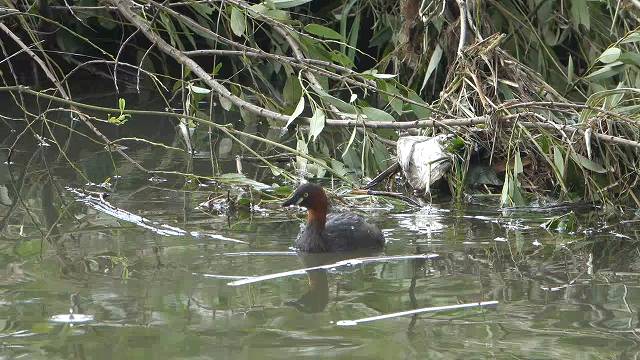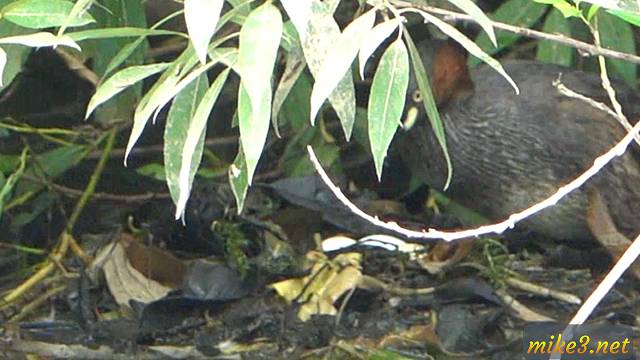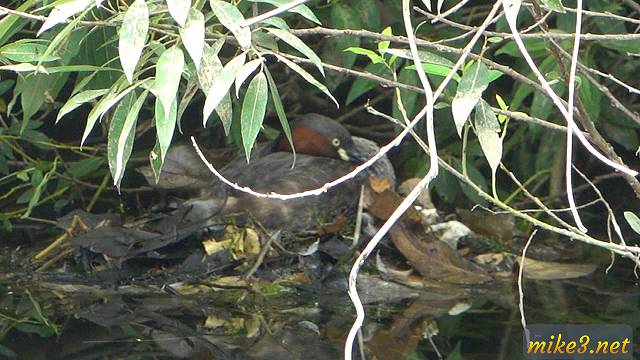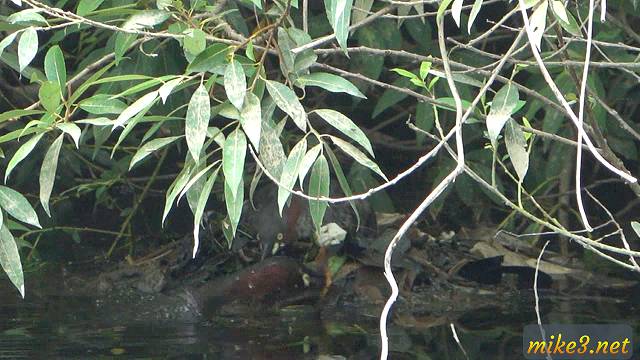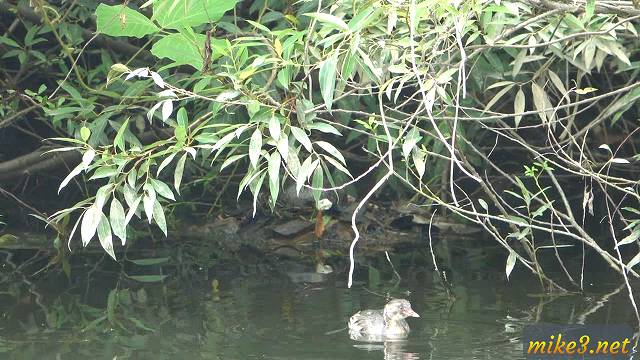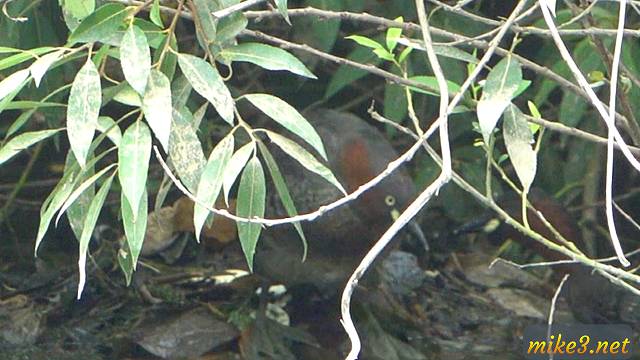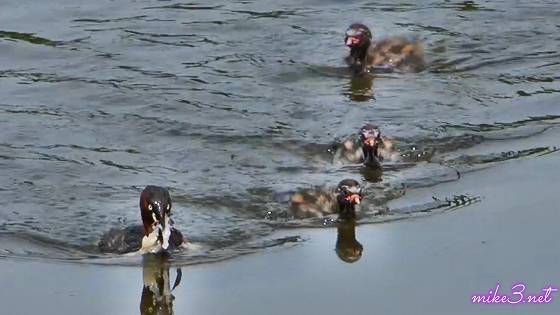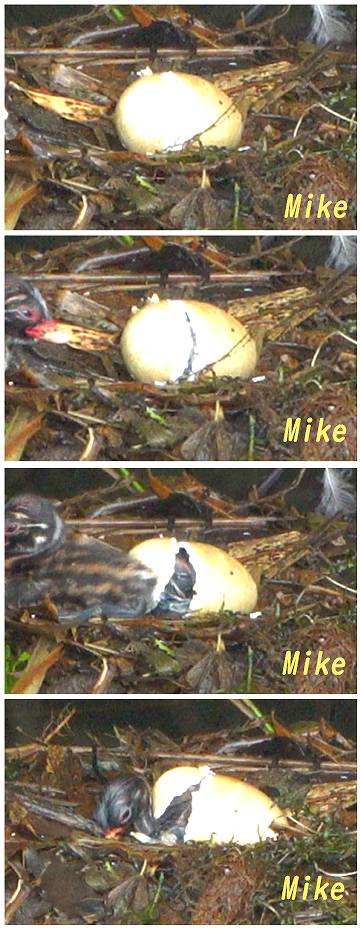On April 16th
I found a little grebe nest. Here, the little grebes build the nest by piling up dead leaves, small twigs, algae (waterthyme), etc. on the stems of running reeds that have fallen into the river. It is called floating nest because it floats on the water. Objects that can be used as support include tree branches hanging down to the river, and running reeds growing in the water. This year, nest building is about a month later than last year.
There is a nest at the end of the arrow in the next image.
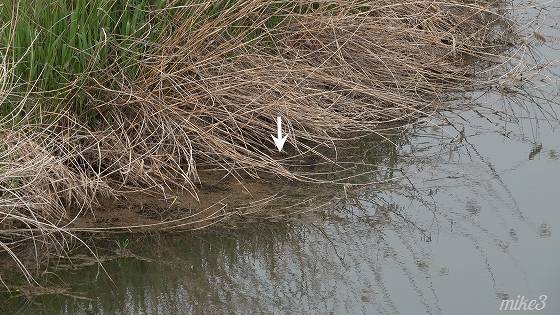
In the next image, there is a little grebe near the nest. It does not lay an egg. I’m concerned about the presence of a turtle. I once saw a turtle eating eggs of a little grebe.

On April 17th
There is a little grebe on the nest. It does not lay an egg.
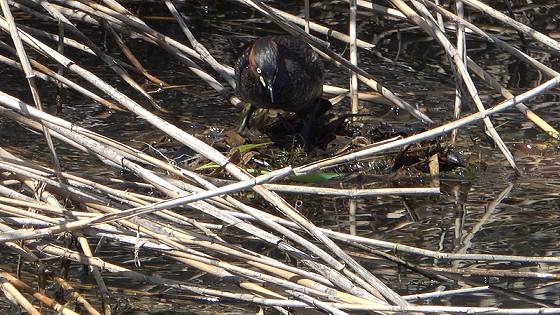
On April 18th
A little grebe laid its first egg.
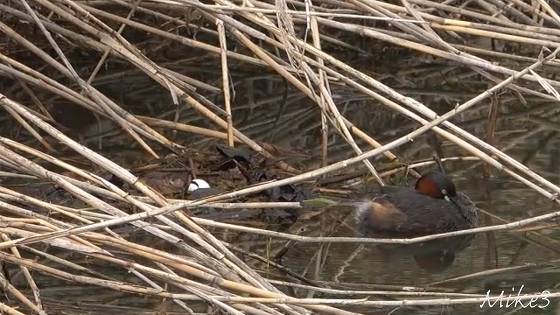
April 19th.
It is incubating an egg. Grebes begin incubating eggs immediately after laying eggs.
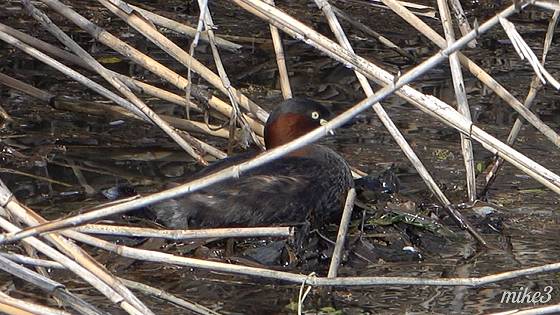
There is one egg laid on the 18th. No eggs laid today.
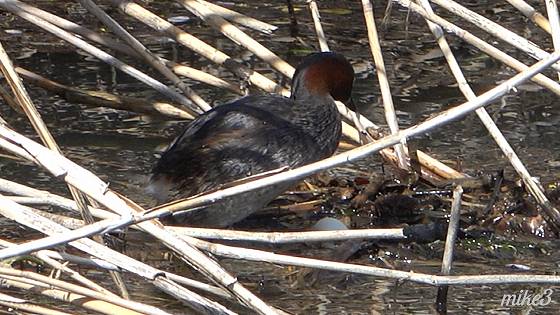
On April 20th.
We see one egg. No additional eggs are laid.
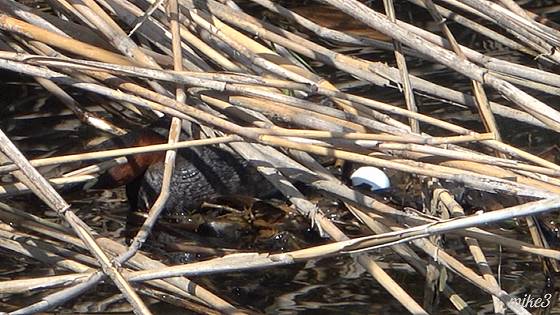
A little grebe is incubating an egg.
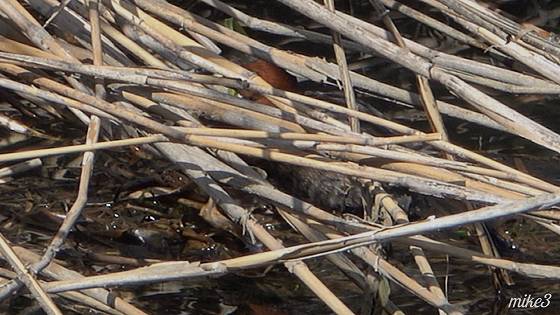
April 21st .
We see two eggs, but maybe there are three.
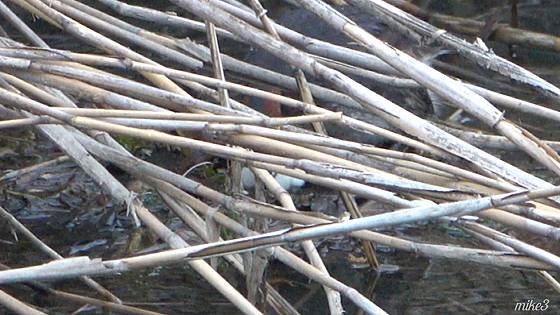
April 22nd .
There are three eggs. I hope all three hatch successfully.
